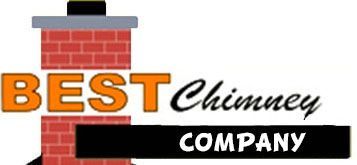✓ 60 Years of Experience
✓ Better Business Bureau: A+ Rating
✓ Fully Licensed & Insured
YOU ASKED! GET ANSWERS TO COMMON FIREPLACE & CHIMNEY QUESTIONS HERE.
-
What are the different types of chimneys?
Basically, there are three categories of chimneys. There are masonry chimneys, which are made of brick, concrete, and mortar. There is prefab, which is manufactured at a factory and installed as a unit. There are several kinds of prefab (prefabricated), which include the Isokern, which can be made to look like a masonry chimney. Then there is the hybrid chimney, which has a masonry base, firebox, and smoke chamber, but it then transforms into a high-temperature pipe with a steel stud frame.
-
What is a prefab chimney?
A system prefabricated or manufactured at a factory somewhere. It typically has a metal firebox and a thin metal pipe. The pipe is kept cool by air rushing through the cooling cavity in the pipe.
-
How can I tell what type of chimney I have?
Real bricks in the firebox usually mean you have a masonry system. The top of the chimney offers clues as well. If you can see a clay-type square or oval pipe protruding out the top of the chimney stack, you have a masonry fireplace and chimney system. If you can see a metal pipe with a metal cap that fits the pipe perfectly, protruding out the top, chances are you have some kind of a prefab. Look at the firebox. Does it have a metal box? If so, you have a prefab. If it is all brick and mortar but with the metal pipe protruding out of the top, you probably have a hybrid system.
-
How often should I have my chimney swept?
It depends on what you burn and how well your system operates. When we see a build-up of 1/8 to 1/4-inch of creosote, we recommend the chimney be swept. If you can’t see the flue by looking up from the firebox and you use the fireplace ten times per season, then you should have it swept yearly. So, if you use your fireplace, you should have it cleaned and inspected once per year.
-
Is there a danger that carbon monoxide may escape from my chimney back into my home?
Yes. If you smell smoke, shine a flashlight across the top of the firebox opening. If you can see smoke escaping the firebox and coming into the room, do the aluminum foil trick described above. Carbon Monoxide affects people differently. There are recorded cases where some persons have suffered devastating effects from CO exposure while others in the same room suffered none. A gas fireplace, if it is not drafting properly and not burning the gas completely, will put deadly CO into the living space. We would be happy to come out and check for Carbon Monoxide for you. Give us a call!
-
What position should my damper be in?
Open during a fire but closed during cold days because the heated air from the furnace will rise and escape out the chimney. A damper in the closed position will stop this flow of heated air out of your chimney and save you money and our natural resources.
-
When buying a home, I noticed that the bricks near the firebox opening had been painted over. Should I be concerned?
Yes. This usually indicated that the fireplace did not work well, so the owner tried to hide this fact by painting over the soot-stained bricks. In addition, the paint may not be high-temperature paint, and when subjected to high temperatures, it could release toxic fumes. This is one of our Red Flag Indicators.
-
When looking for homes, I have noticed that some chimneys have been painted over. Is this a red flag?
Yes. The owner may be trying to hide a structural break by caulking or otherwise patching up the crack and then painting over it. This is unacceptable, as it does nothing to improve the condition of the chimney.
-
When looking to buy a home, I noticed some fireplaces in older homes had never been used. Is this something to worry about?
Yes. 9 times out of 10, when we come across an older home that has a chimney that has never been used, there is something wrong with the chimney. Remember, back when the house was built, the fireplace was usually the only source of heat. One that has never been used means that there is almost certainly something wrong with it. This is another Red Flag Indicator.
-
What is the point of greatest stress on a chimney?
At the roofline.
-
If I see a crack in my chimney, is it something to worry about?
Yes. Contact us here at Best Chimney Co. for an inspection as soon as possible.
-
What would cause a chimney to leak?
There are several possibilities. The number one cause is the roof/chimney intersection. If this is not properly flashed, it will leak. The number two cause is no rain cap. Rain will come into the flue of the chimney and begin to saturate the inside of the chimney. If the geographic area you live in receives 3 inches of rain, you will get 3 inches dumped into the chimney. Saturation is another cause. The bricks, being porous, and exposed to weeks of heavy rain, simply absorbed so much water the water bypassed the flashing and showed up in the house. Lastly, there is “wicking.” Water saturating the soil around the base of the chimney will “wick” up through the porous masonry and show up inside the house. This condition is almost always caused by a poor drainage situation coupled with over-irrigating or a downspout from the roof, depositing a lot of water near the chimney. All water should drain away from the house, not only the chimney.
-
What are “chimney fires”?
A chimney fire is a fire that takes place in the smoke chamber and the flue of a chimney. When the flue and or smoke chamber accumulates ¼-inch or more of the sticky tar substance called creosote, a chimney fire is possible. The creosote ignites, and if supplied with enough oxygen, a roaring chimney fire can ensue. Chimney fires are dangerous and are responsible for houses burning to the ground. If your chimney has ever had a chimney fire, you must get the system inspected by a professional before attempting to use it again. Chimney fires can be prevented by annual inspections to make sure your system remains clean and is operating correctly and by burning dry wood.
Navigation
Reach Out
WAYNE COUNTY
OAKLAND COUNTY
MONROE COUNTY
Business Hours
- Mon - Fri
- -
- Sat - Sun
- Closed




Michigan State License
#40800
Mechanical Contractor License
#711 1110
Navigation
Reach Out
Serving Downriver Communities including:
WAYNE COUNTY
OAKLAND COUNTY
MONROE COUNTY
Cities We Serve:
- Dearborn
- Taylor
- Allen Park
- Livonia
- Monroe
- Trenton
- Dearborn Heights
- Detriot
- Wyandotte
- Gross Ile
- Woodhaven
- Southgate
- Riverview
- Gibraltar
- Lincoln Park
- Flat Rock
- Rookwood
- Romulus

